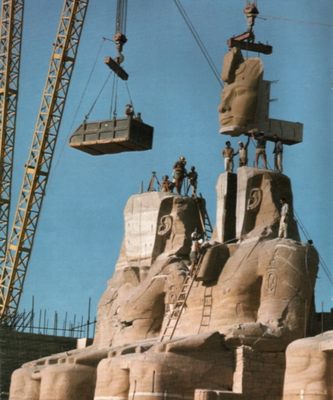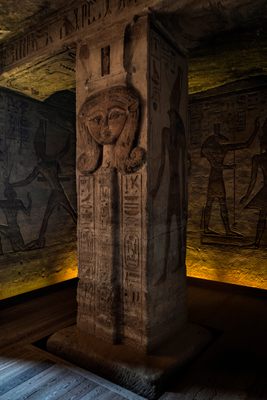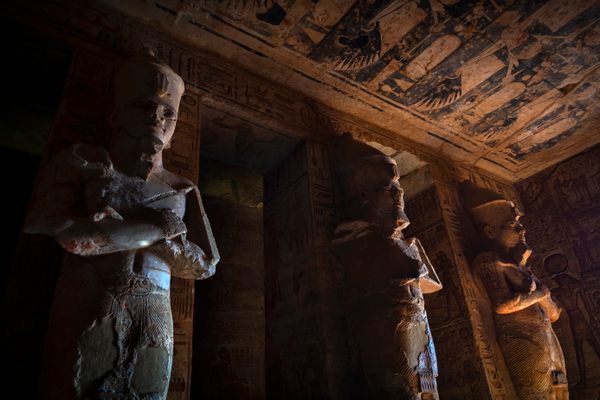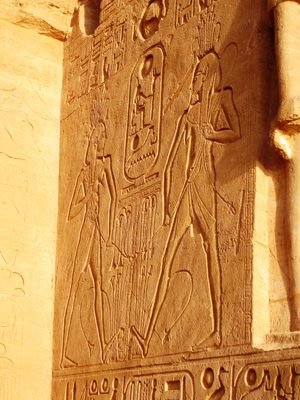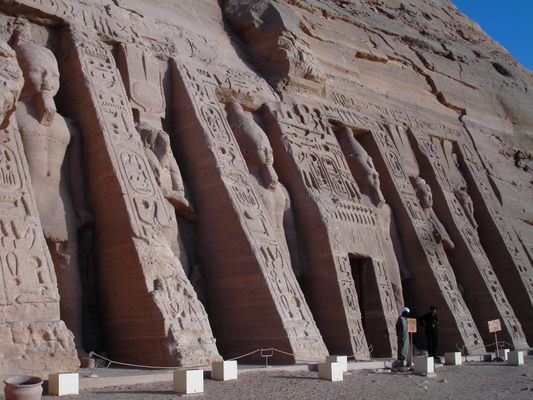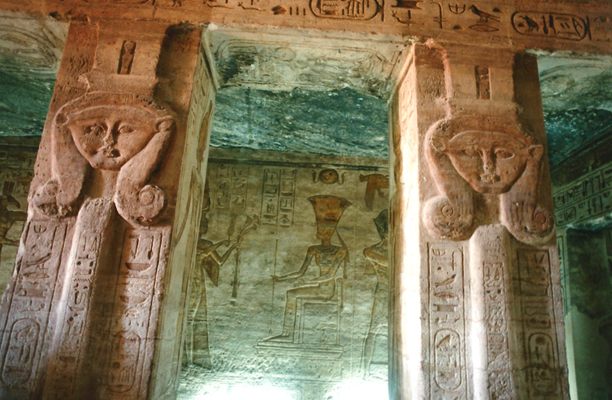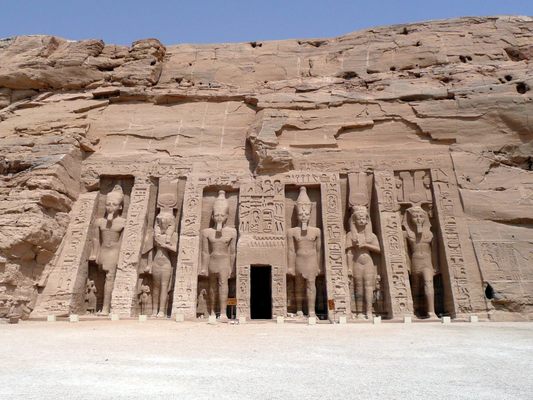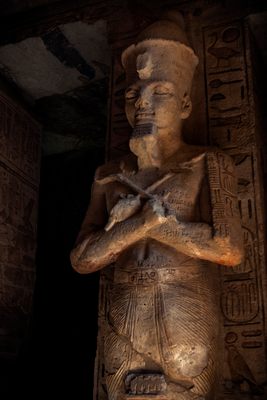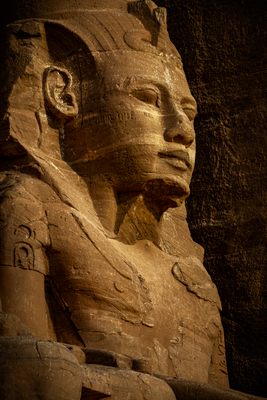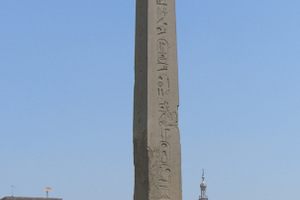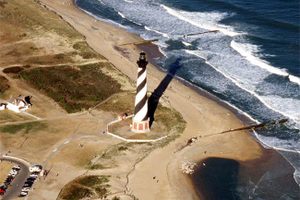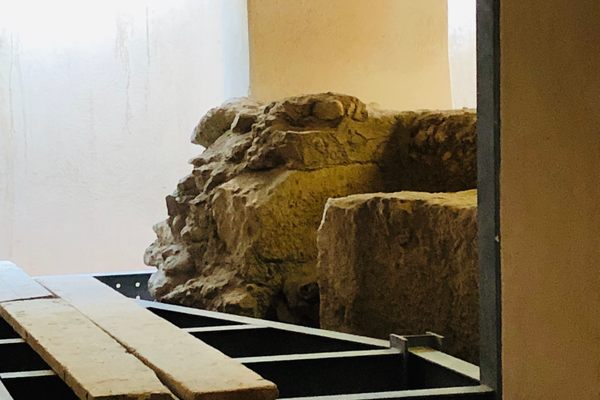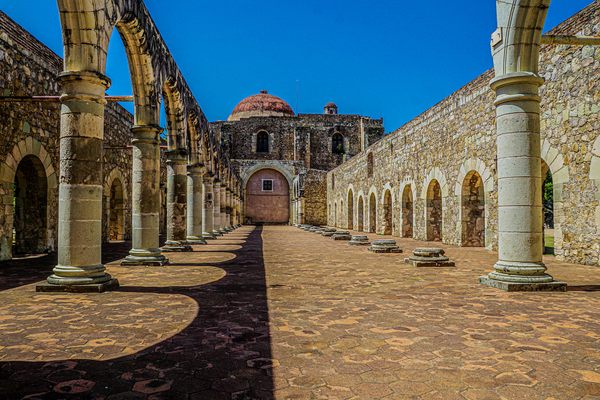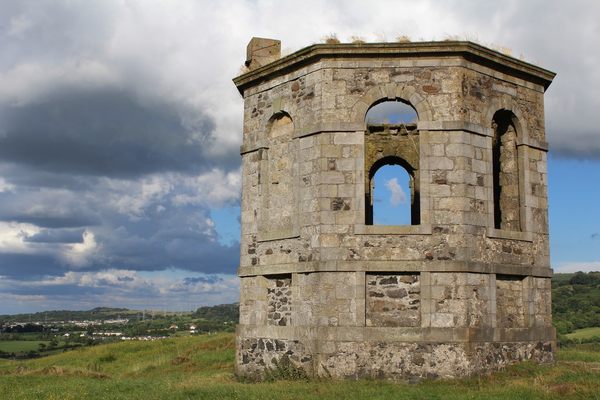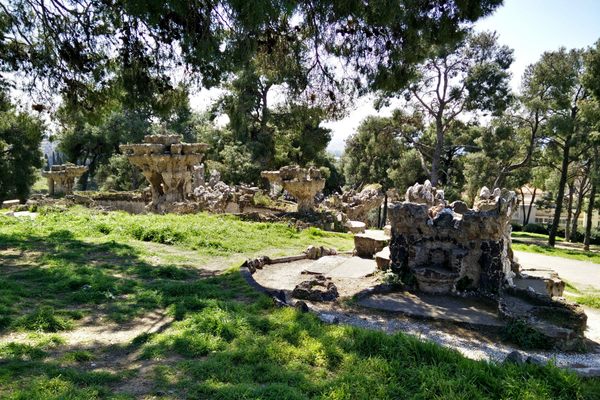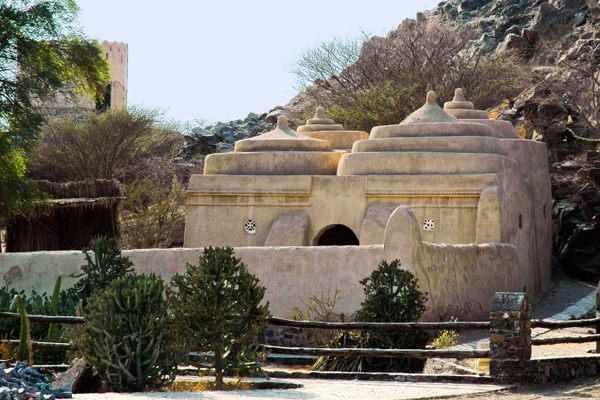About
The Great Temple of Abu Simbel was completed in 1244 BCE. It is one of the crowning monuments of Rameses the Great, the pharaoh who would become the model for Percy Shelley’s poem "Ozymandias": "My name is Ozymandias, king of kings: / Look on my works, ye Mighty, and despair!"
At Abu Simbel, four colossal statues of Rameses, each 20 meters high, look down upon the desert. But the temple’s greatest secret lies at its heart.
It was built along the axis of the sun, so that twice a year, light would flood into its innermost sanctum. The temple was moved wholesale in the 1960s to accommodate the Aswan High Dam, but its uncanny architecture still functions today. On February 22 and October 22 each year, you may still see the sunlight reach the innermost room of Rameses’ time-keeping temple, as it did over three thousand years ago. There, the sun illuminates three of the four statues waiting there: Ra, Amun, and Rameses himself. Only the fourth statue, of Ptah, the mysterious creator-god, is left in shadow.
UNESCO's World Heritage Convention was created, in fact, to preserve Abu Simbel. After the Nasser Dam was built, the temple was briefly submerged underwater. A large effort saw it carried out and rebuilt, piece by piece, the large mountain it was carved into included.
Related Tags
Egypt Family Adventure: Pyramids, Mummies & The Mighty Nile
Cross dream-like deserts and uncover the secrets of ancient pyramids.
Book NowCommunity Contributors
Added By
Published
August 11, 2013

